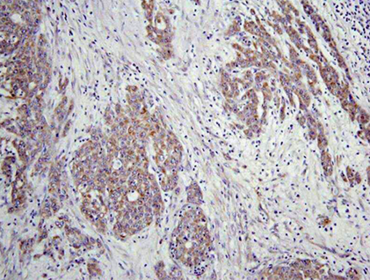Identifying the mechanism behind the development of a rare, particularly aggressive kidney cancer
Renal medullary carcinoma is the third most common kidney cancer in young adults. Resistant to therapies used against other types of kidney cancer, there is no effective treatment for metastatic forms. In this article published in Nature communications, Professor Gabriel Malouf and Irwin Davidson's team describe the mechanism of transformation of these tumors via resistance to ferroptosis, a type of cell death that promotes cancer initiation. In doing so, they provide new insights that can be exploited to develop new approaches to treatment.

Renal medullary carcinoma is an aggressive tumor affecting mainly young adults, with a median age of 28 years. To date, there are no effective therapies for the advanced stages.
Previously, Gabriel Malouf and Irwin Davidson's team defined the molecular characteristics of a large cohort of medullary carcinomas of the kidney. They demonstrated that loss of the SMARCB1 gene is associated with DNA replicative stress, conferring therapeutic vulnerability to drugs targeting DNA repair pathways (Msaouel et al., 2020). However, the mechanism of oncogenic transformation and the cell of origin in the kidney have yet to be identified.
In this article, researchers use human medullary renal cell carcinoma models and patient samples to dissect the cellular plasticity of cancer cells. Using the technique of single-cell transcriptomics, they suggest that these tumors derive from cells of the ascending branch of the Henle's loop. In addition, they found that loss of the SMARCB1 gene activates a ferroptosis resistance program within Henle's loop cells, enabling their survival and tumor development. Finally, they highlight that re-expression of SMARCB1 at the cell line level induces cell death by ferroptosis, and that induction of ferroptosis by pharmacological agents is a potential therapeutic target.
These results shed light on the onset and development of renal medullary carcinoma, and pave the way for the development of treatments based on ferroptosis inducers.

Model for the transformation of Henle's loop cells from the medullary region of the kidney into RMC cells. Early acquisition of resistance to ferroptosis enables Henle's loop cells to survive in this hypoxic environment, which is rich in iron released by sickle cell red blood cells, thus promoting mutagenic events associated with loss of SMARCB1 and activation of the MYC-regulated oncogenic program. Following transformation, RMC cells undergo an EMT process in a microenvironment rich in tumor-associated macrophages and fibroblasts, favoring their metastasis. Image created by BioRender.
Credit: Bujamin Vokshi, IGBMC
